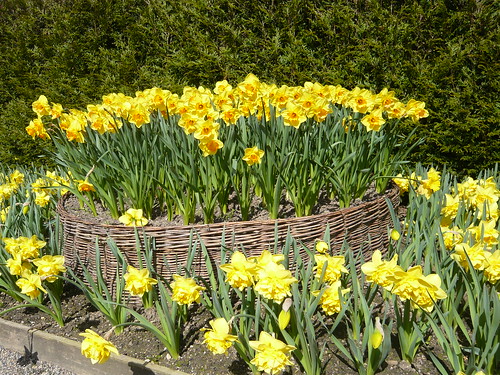Cure for Blind Bulbs
Plants that grow leaves but fail to flower are called ‘Blind’. Often in bulbs such as daffodils, this blindness happens after several successful seasons of flowering.
A crop of strappy green leaves is not what most gardeners aspire too.
Prevention is Better than Cure for Blindness
- Overcrowding as bulbs multiply congests the plants. Split large clumps and replant when the foliage has just died down.
- Plant bulbs deep enough. Shallow planting can cause bulbs to be blind. Soil depth 2-3 times the height of the bulb should be above the tip of the bulb.
- Feed the bulbs with Growmore in spring or a high potash feed if growing in containers.
- Dry conditions can cause blindness. Water thoroughly and regularly after flowering until foliage dies down naturally.
- Help bulbs regenerate their strength by leaving leaves on plants and taking seedheads off.
- Do not knot or tie up the leaves let photosynthesis maximise the bulb size for next year.
- Do not plant too late in the season and expect a good flower crop.
- Not true blindness but pests can eat the buds or damage the bulbs so cover with mesh if you are troubled.
- Young offsets need time to build up to flowering
Some plants are blind for more serious reasons related to their biology. Life can be too short to work on a plant that heredity has decreed it will not flower.
Chose floriferous varieties.
Allow enough time to see if young or recalcitrant plants will flower better in later years.
Other Causes Other Plants
- Conditions during seed production, as well as during post-harvest processing of the seed can increase blind plants.
- Germination and growing conditions can have an effect on the occurrence of blind plants.
- Genetic conditions can have an impact.
- Blindness in tomato and chillie plants is a disorder concerning the growing point.
